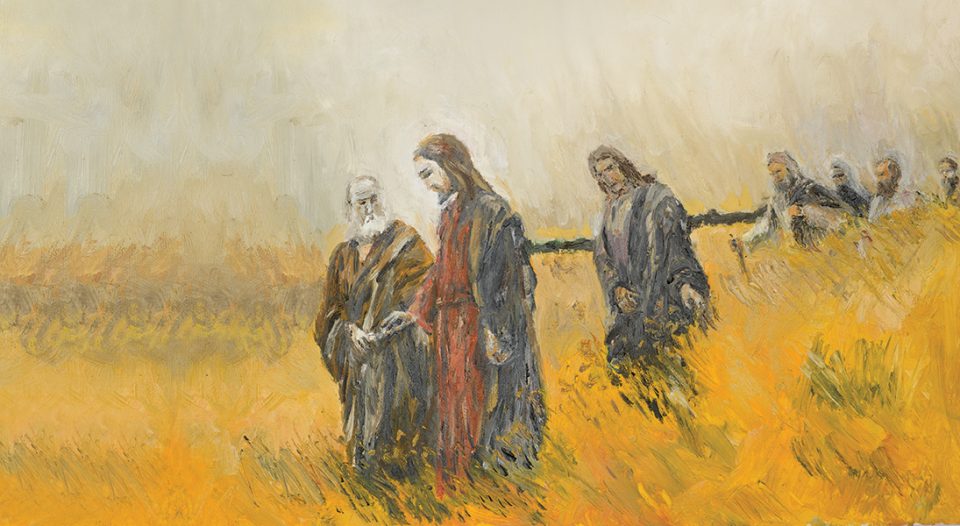It’s time to become better acquainted with the Gospel of Mark, the shortest of our four New Testament Gospels. The church will use readings from Mark throughout 2018 as it follows the series B lectionary.
Mark tells his story of Jesus with an urgency that surpasses what is found in the other Gospels. Jesus’ first words in this Gospel are: “The time is fulfilled!” (1:15), and after that everything seems to happen very quickly in a world that is rapidly changing and will never be the same again.
Mark’s Gospel is imbued with a sense of mystery and ambiguity. Jesus doesn’t mind leaving people in the dark (4:10-12), nor does Mark feel any compulsion to sort everything out for us. In particular, Jesus speaks about “the secret (or mystery) of the kingdom of God” (4:11); he tells people not to make his miracles known (1:43-44; 5:43; 7:36; 8:26); and his very identity remains a mystery to most throughout the story (1:27; 2:7; 4:41; 6:2-3, 14-16; 8:27-28). The effect seems to be to focus attention on his climactic death and resurrection, for it is only through the cross that Jesus’ true nature and purpose becomes apparent (15:39).
Mark offers a very human portrait of Jesus. Of course, Jesus is an extraordinary, divine being who exhibits power over disease, nature and unclean spirits. But he is also depicted as a man subject to human weakness and frailty. He gets hungry (11:12), he doesn’t know everything (13:32), and he is unable to work miracles for those who have no faith (6:5). He exhibits a full range of human emotions, including pity (1:41), anger (3:5), sadness (3:5), wonder (6:6), compassion (6:34), indignation (10:14), love (10:21) and anguish (14:34).
Jesus is presented as a preacher of the gospel and the content of his preaching can be summarized in one sentence: “The kingdom of God has come near” (1:14-15). The phrase “kingdom of God” refers to the phenomenon of God ruling, wherever and whenever that may be. When Jesus says this phenomenon has “come near,” he means that the possibility of God ruling our lives is greater now than ever before. Childlike faith makes the possibility of God ruling our lives greater still (10:14); attachment to riches makes it more remote (10:25).
Mark tells his story of Jesus with an urgency that surpasses what is found in the other Gospels. Jesus’ first words in this Gospel are: “The time is fulfilled!”
Further, the in-breaking of God’s rule challenges any separation of what is pure or holy from what is defiled or unclean. When Jesus touches a leper, he doesn’t become unclean, but rather the leper is cleansed (1:40-42). Similarly, he associates with sinners without worrying that they will contaminate him (2:15-17). Throughout Mark’s Gospel, we learn that “holiness” is now contagious in a way that “uncleanness” was before: what is holy now has the power to transform what is unclean.
The climax of Mark’s Gospel comes with its account of the passion and resurrection of Jesus. In Mark, the plot to kill Jesus is introduced much earlier than in the other Gospels (3:6; cf. Matthew 12:14; Luke 19:47; John 11:53). Thus, most of the story may be read as a prelude to what happens at the end when Jesus dies on the cross. Indeed, Jesus has not ultimately come to heal the sick or to argue with the Pharisees—he has come to give his life (10:45).
Mark doesn’t spell out exactly why Jesus must do this or how his death serves God’s purposes, but he does offer us two figurative images: ransom and covenant. The language of “ransom” (10:45) implies that Jesus’ death somehow purchases human freedom, and the language of “covenant” (14:24) implies that it seals or establishes a relationship between humanity and God. Further, the cross of Christ becomes the primary symbol for the life of self-denial, service and sacrifice that Jesus’ followers are called to embrace (8:34).
With regard to those followers, Mark’s Gospel seems to portray Jesus’ disciples in ways that accentuate their failings. They rarely understand what Jesus says to them and they inevitably fail to carry out his demands. When the shadow of the cross looms near, they scatter: one betrays him, another denies him and the rest desert him. Still, Jesus never gives up on these terribly inadequate disciples. At the end of the story, the message that goes out from the empty tomb is that he wants his disciples back (16:7).
Mark probably portrays the disciples as he does because he knows that inadequate Christians everywhere will be able to identify with them. He wants to teach us that our relationship to Christ depends on his faithfulness to us, not on our faithfulness to him.





